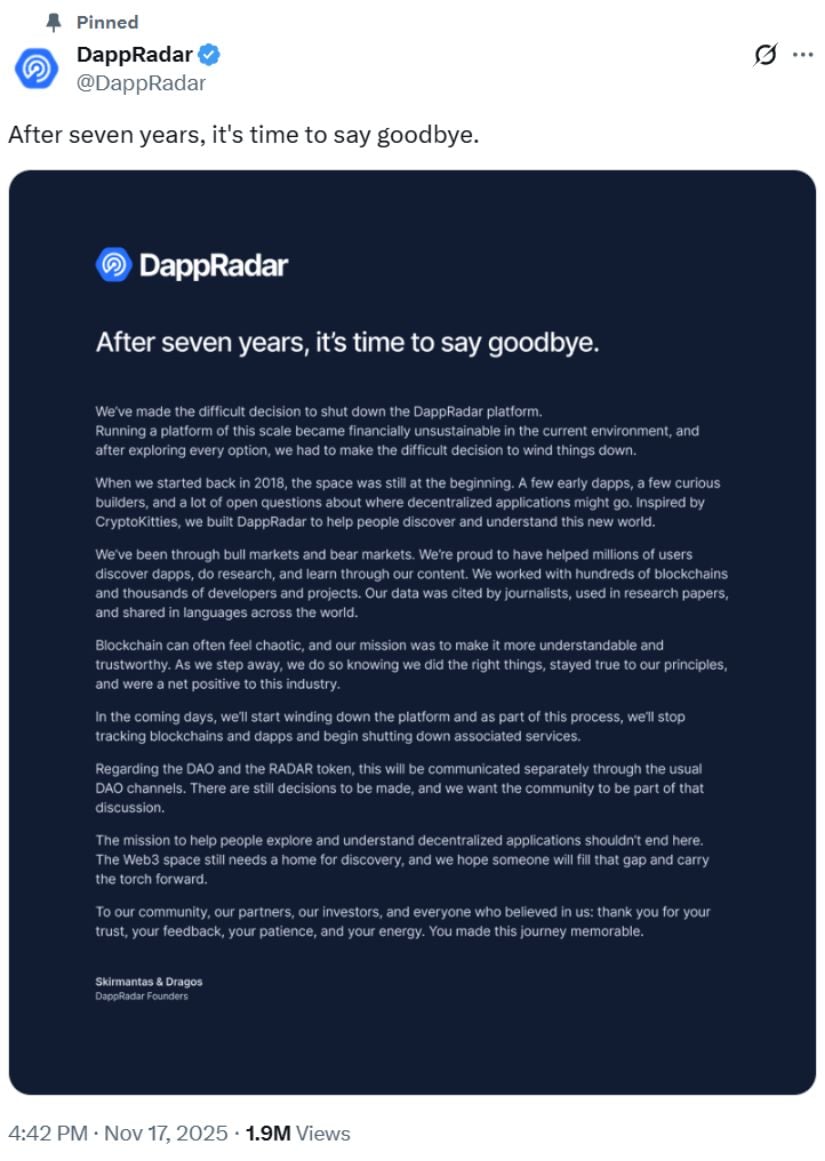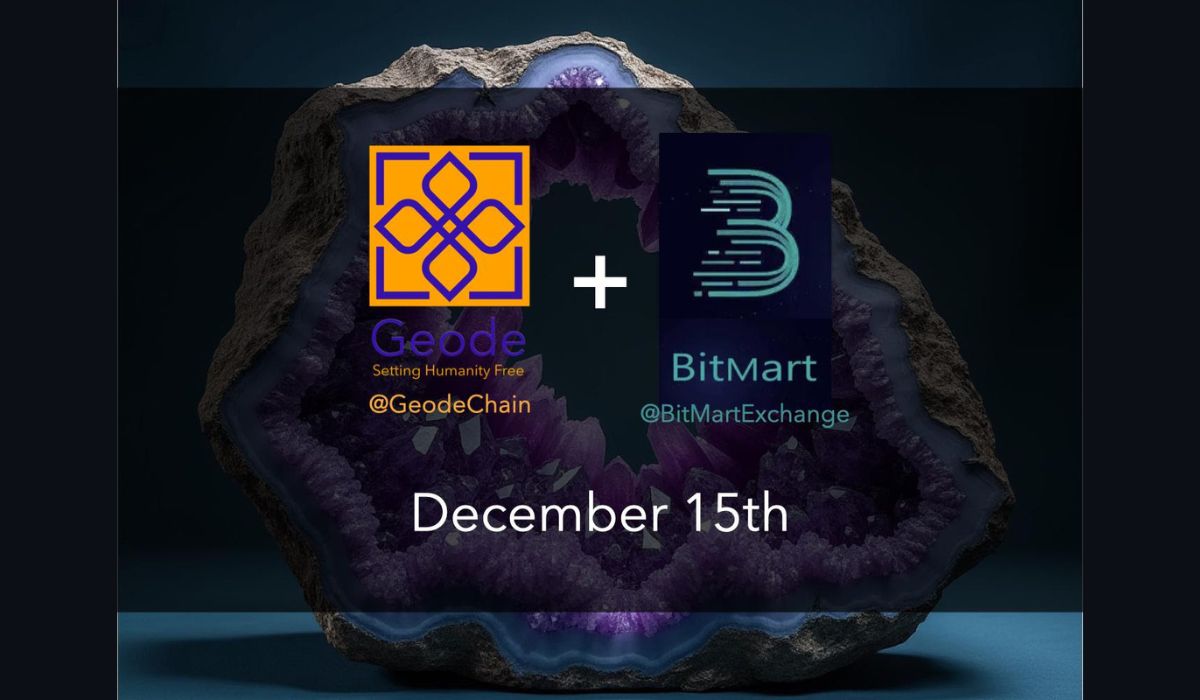
The platform’s founders, Skirmantas Januškas and Dragos Dunica, made the announcement on X, stating that running their platform became “financially unsustainable in the current environment.” They said they explored every option before making this difficult decision.
Platform’s Growth and Impact
DappRadar launched in February 2018, inspired by the CryptoKitties boom that showed the potential of blockchain applications. The platform grew to track 18,111 decentralized applications across 93 different blockchains. By March 2025, it served approximately 500,000 monthly users who relied on its data for investment and research decisions.
The company raised $7.33 million during its lifetime. This included a $2.33 million seed round in September 2019 and a $5 million Series A round in May 2021. Major investors included Prosus and Lightspeed Venture Partners. At its peak, the platform recorded 24 million daily active wallets earlier this year.
DappRadar became essential for developers, investors, and journalists who needed accurate blockchain data. The platform tracked everything from early DeFi experiments to the rise of blockchain gaming and the NFT ($0.00) market boom. Its data was cited worldwide and used in research papers across the industry.
Financial Pressures Mount
Despite its success and user base, DappRadar faced serious financial challenges. The company had a monthly burn rate of $15,500 with only three months of stablecoin reserves remaining. This meant they were quickly running out of money to keep operations running.

Source: @DappRadar
The crypto industry has seen funding drop by 70% year-over-year, making it harder for companies like DappRadar to raise new capital. Unlike trading platforms that generate fees from transactions, analytics platforms struggle to create sustainable revenue models.
The DappRadar DAO treasury holds $1,602,289 in total assets, but 97% of this is in RADAR tokens that lost significant value. The treasury only has $46,162 in stable coins, which at their current spending rate would last just a few more months.
RADAR Token Crashes
The shutdown announcement immediately impacted the RADAR token price. The token fell approximately 30% to 38% within hours of the news, reaching around $0.00072. This sharp decline wiped out hundreds of thousands of dollars in value from the DAO treasury.
The treasury holds 2.34 billion RADAR tokens, representing 23.4% of the total 10 billion token supply. Treasury records show approximately $163,000 in stablecoin outflows through November 2025, confirming the high monthly operational costs.
The founders said they will communicate separately about the future of the RADAR token and the DAO through usual community channels. However, they did not provide specific timelines or details about these plans.
Industry-Wide Challenges
DappRadar’s closure reflects broader problems in the crypto analytics sector. The European Central Bank reported that crypto market capitalization dropped to $2.8 trillion by March 2025, creating volatility that affects crypto businesses.
Analytics platforms face unique technical challenges including data accessibility, scalability, and tracking the growing number of blockchain networks. These operational costs remain high while revenue sources stay limited, especially as more free alternatives become available.
Several other crypto companies shut down in 2025, including cryptocurrency exchange eXch, NFT marketplace X2Y2, and decentralized exchange Mango Markets. These closures show how difficult market conditions have become for crypto infrastructure companies.
DappRadar’s shutdown creates a gap in the analytics space. While competitors like DeFiLlama and Dune Analytics exist, DappRadar was unique in offering comprehensive cross-chain application tracking. The loss of this major data aggregator may widen information gaps and reduce neutral analytics availability.
Final Technical Innovation
Ironically, DappRadar unveiled a major technical achievement just hours before announcing its shutdown. The company launched a new cross-chain token staking system that lets users claim rewards on any blockchain, regardless of where they originally staked their RADAR tokens.
This innovation was designed to remove high fees that often prevent everyday users from participating in staking. The system offered consistent returns across different networks and was built to work on any blockchain where RADAR launches. However, despite this technical progress, the financial reality made continued operations impossible.
The End of an Era
DappRadar’s closure marks the end of a company that helped shape how people track and understand decentralized applications. For seven years, it served as a window into blockchain activity, helping millions of users discover new applications and understand market trends.
The founders reflected on their journey, noting they were inspired by CryptoKitties to help people explore the new world of decentralized applications. They expressed hope that others will continue their mission of providing reliable blockchain analytics.
As the crypto industry continues to mature, the loss of established infrastructure providers like DappRadar highlights the ongoing challenges of building sustainable businesses in this space. While the technology continues advancing, companies still struggle to find profitable business models that can survive market downturns.

















 24h Most Popular
24h Most Popular



 Utilities
Utilities